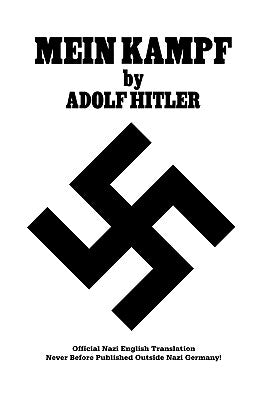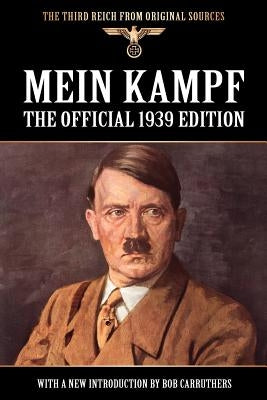What Are the Best Books for Medical Students

Embarking on a medical education journey is both exciting and challenging. For medical students, having the right resources can significantly impact their learning experience and academic performance. Among the various study aids available, books remain a fundamental tool for understanding complex medical concepts and preparing for exams. This article explores some of the best books for medical students, highlighting essential textbooks, reference materials, and study guides to help you succeed in your medical studies.
1. "Gray’s Anatomy for Students" by Richard L. Drake, A. Wayne Vogl, and Adam W. M. Mitchell
"Gray’s Anatomy for Students" is a comprehensive and highly regarded anatomy textbook tailored specifically for medical students. Its clear illustrations and detailed descriptions make it an invaluable resource for mastering human anatomy. The book provides a thorough understanding of anatomical structures, essential for clinical practice and exams.
Why It’s Essential:
- Detailed Illustrations: Offers clear, full-color illustrations to aid in learning complex anatomy.
- Student-Focused: Written with medical students in mind, simplifying complex topics.
- Clinical Relevance: Links anatomical knowledge to clinical practice.
2. "Robbins and Cotran Pathologic Basis of Disease" by Kumar, Abbas, and Aster
"Robbins and Cotran Pathologic Basis of Disease" is a cornerstone in pathology education. This textbook provides an in-depth exploration of the mechanisms of disease, combining basic pathology with clinical examples. It is essential for understanding disease processes and their implications in clinical settings.
Why It’s Essential:
- Comprehensive Coverage: Thoroughly covers pathology, including disease mechanisms and clinical correlations.
- Clinical Insights: Bridges the gap between basic science and clinical practice.
- Illustrations and Tables: Features detailed illustrations and tables to enhance learning.
3. "Bates’ Guide to Physical Examination and History Taking" by Lynn Bickley
Bates’ Guide is a highly recommended resource for learning physical examination skills and history taking. This book provides step-by-step instructions on performing clinical examinations and offers guidance on interviewing patients effectively. It is an invaluable tool for developing clinical skills and building patient rapport.
Why It’s Essential:
- Detailed Instructions: Offers clear, step-by-step guidance on physical examination techniques.
- Practical Tips: Provides practical advice for patient interactions and history taking.
- Clinical Focus: Enhances clinical skills essential for medical practice.
4. "Harrison’s Principles of Internal Medicine" by J. Larry Jameson, Anthony S. Fauci, and others
"Harrison’s Principles of Internal Medicine" is a comprehensive reference for internal medicine. It covers a broad range of topics, including pathophysiology, diagnosis, and treatment of diseases. This textbook is crucial for understanding internal medicine concepts and preparing for board exams.
Why It’s Essential:
- Extensive Coverage: Provides in-depth information on internal medicine and various medical conditions.
- Evidence-Based: Offers evidence-based approaches to diagnosis and treatment.
- Clinical Relevance: Serves as a valuable reference for both students and practitioners.
5. "Clinical Microbiology Made Ridiculously Simple" by Massoud Mahmoudi
This book simplifies the complex field of microbiology, presenting it in an engaging and accessible manner. "Clinical Microbiology Made Ridiculously Simple" is ideal for medical students who need a concise and practical guide to microbiology, with a focus on clinical applications.
Why It’s Essential:
- Simplified Content: Presents microbiology concepts in an easy-to-understand format.
- Clinical Focus: Emphasizes clinical relevance and practical applications.
- Illustrations and Summaries: Includes helpful illustrations and summaries for quick reference.
6. "First Aid for the USMLE Step 1" by Tao Le and Vikas Bhushan
"First Aid for the USMLE Step 1" is a must-have for students preparing for the USMLE Step 1 exam. This study guide offers a comprehensive review of high-yield topics and essential concepts. It includes practice questions, mnemonics, and tips for effective exam preparation.
Why It’s Essential:
- Exam Preparation: Provides a focused review of key concepts for the USMLE Step 1.
- High-Yield Information: Includes high-yield facts and mnemonics for efficient studying.
- Practice Questions: Features practice questions to test your knowledge.
7. "Netter’s Atlas of Human Anatomy" by Frank H. Netter
Netter’s Atlas is a renowned resource for visualizing human anatomy. The atlas features detailed, hand-drawn illustrations by Dr. Frank Netter, offering a clear and accurate representation of anatomical structures. It is an essential tool for understanding spatial relationships in anatomy.
Why It’s Essential:
- Detailed Illustrations: Provides accurate, hand-drawn illustrations of human anatomy.
- Clinical Relevance: Useful for understanding anatomical relationships and clinical applications.
- Visual Learning: Enhances learning through detailed visual representations.
8. "Basic and Clinical Pharmacology" by Bertram Katzung
"Basic and Clinical Pharmacology" by Bertram Katzung is an essential textbook for understanding pharmacology. It covers the principles of drug action, pharmacokinetics, and pharmacodynamics, along with clinical applications. This book is crucial for mastering pharmacological concepts and their clinical relevance.
Why It’s Essential:
- Comprehensive Coverage: Offers a thorough understanding of pharmacological principles and clinical applications.
- Clinical Focus: Connects pharmacology with clinical practice and patient care.
- Updated Information: Includes the latest information on drug mechanisms and therapies.
9. "The Washington Manual of Medical Therapeutics" by Hemant Godara
The Washington Manual provides concise and practical information on medical therapeutics. It is a valuable resource for quick reference on diagnosis and management of common medical conditions. This manual is especially useful for clinical rotations and hands-on practice.
Why It’s Essential:
- Practical Information: Offers quick reference for diagnosis and management.
- Clinical Relevance: Useful for clinical rotations and real-world medical practice.
- Concise Format: Provides information in a concise and accessible format.
Best Books for Medical Students
Choosing the right books can greatly enhance your medical education and exam preparation. From foundational anatomy and pathology textbooks to practical guides for clinical skills and pharmacology, these essential reads provide a solid base for medical students. Whether you’re preparing for exams, honing your clinical skills, or delving into complex medical topics, these books offer invaluable insights and support. By incorporating these resources into your study routine, you’ll be well-equipped to navigate the challenges of medical school and excel in your future medical career.
Explore your favorite book at your own online bookstore.
Happy Reading!









